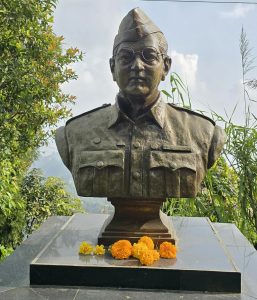
— By Uma Purkayastha
Very recently I had a sojourn in Kurseong, a beautiful and picturesque hill town 4.864ft above sea level in the district of Darjeeling, West Bengal. My keen interest in this upland hideaway was to pay a visit to the Netaji memorial there, and to learn its history.
The natural beauty of Kurseong is scenic, and its pleasant weather with an enchanting ethos that brings tranquillity in the mind of its visitors. Much like Shillong.
Interestingly, Kurseong receives the highest amount of rainfall after Sohra in Meghalaya.
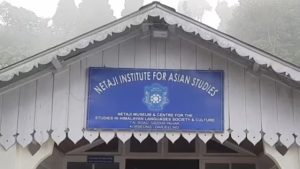
‘The serenity and beauty of Kurseong had also attracted and inspired famous personalities like Rabindranath Tagore, Atul Prasad Sen, Netaji Subhash Chandra Bose and Sister Nivedita. Mark Twain was also believed to have visited Kurseong in 1885 and spent some time there. By all accounts, even Rabindranath Tagore was inspired to write a few poems when he visited the hill station’. [Ref:- https://wbnorthbengaldev.gov.
The Netaji Memorial Museum is situated on the Gidda Hill, about 4km from Kurseong town. During 1922, Netaji’s elder brother Sarat Chandra Bose, purchased the house from the then Assam Deputy Superintendent of Police Peter Leslie. The ownership of the house was with the Bose family until 1996.
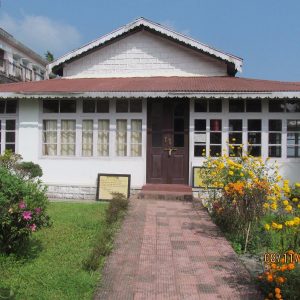
It is learnt that as a result of the severe restrictions imposed upon the freedom fighter Subhas Chandra Bose by the British authorities, his health had deteriorated severely. Bose thereby went to Europe for medical treatment, with due permission of the colonisers; and upon his return from there in 1936, he stayed at this house in Kurseong for seven months, to regain his health. Later, once again he had a short stay there in October 1937.
While staying there at Kurseong, Subhas Chandra’s mind was burdened with ongoing political issues. He had sent many political letters from this house. He prepared the Haripura Congress speech from this house, and additionally wrote many letters to Gandhiji and Jawaharlal Nehru from here. All the letters written by Netaji are carefully preserved in the museum. The lionhearted freedom fighter also wrote personal letters from this house to his wife Emilie Schenkel. Moreover, the museum has preserved his photos, files and articles bearing his memory of staying there. There are many interesting pictures of Netaji while at Kurseong when he would go for morning walks – a picture during his morning walk by the hill spring at Paglajhora is well preserved at the museum. There are also many photographs of Netaji with the Bose family, centering the house. Other than that, furniture used by him during his stay such as a study table, chair, cot, dresser are all well kept there.
—“Netaji’s elder brother Sarat Chandra Bose planted a Camellia tree there in 1934, which is still present today”. [Curated By: Anirban Roy, https://www.news18.com]
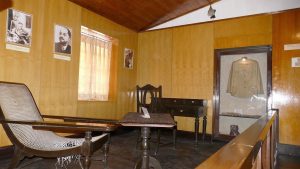
This historical house is now the ‘Netaji Museum’, under the umbrella of the Netaji Institute for Asian Studies.
In 2005, the house became a museum under the auspices of the Indian Museum at Kolkata. The Government of West Bengal renovated the house in 1997; and it was inaugurated in 2000 as a new museum.
Nowadays, the museum additionally acts as an Institute for ‘Himalayan Languages & Culture Research’. [https://amritmahotsav.nic.in]
Netaji Memorial in Kurseong is an attractive Tourist spot in the hill resort; and innumerable visitors, particularly the Netaji lovers visit the place every year, even in December-January, braving severe fog and cold. The enchanting views and the deep silence and solitude of the place create a visual and spiritual atmosphere for tourists and for every individual seeking tranquillity and serenity. Netaji spent a good number of days and left an indelible mark in the hill resort.
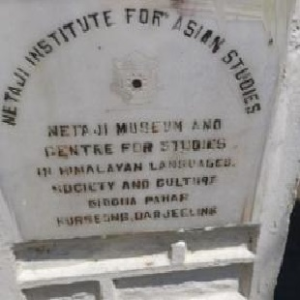
Drawing parallels to the great leader’s Shillong connection, he also made two visits in 1927 and 1938. On June 12, 1927, Netaji Subhas Chandra Bose came to Shillong for the first time to recuperate from his ailing condition. Bose was sent to Shillong from Mandalay Jail as his weight had abnormally fallen. He was under the supervision of Dr Bidhan Chandra Roy. Netaji stayed in the ‘Kelsal Lodge’ in the European Ward (the present Oakland area), until October 18, 1927. He was under the medical supervision of Dr Pulin Bihari Dev. Roy from Calcutta visited him sometimes at the ‘Kelsal Lodge’. Once again, in September 1938, Netaji came to Shillong as the President of AICC (All India Congress Committee) and stayed in ‘Asely Hall’ (near Earl Sanatorium). It was a politically intensive time at the time as Assam under the leadership of Sir Sadullah was determined to form a Muslim League Ministry in Assam but Netaji came as a saviour and vehemently objected to the decision. Despite the political happenings, Netaji maintained a close interaction with the people of Shillong. He was cordially invited by many organisations. He delivered patriotic speeches in Polo (near Matri Mandir), Opera Hall, Khasi Durbar Hall, Jail Road field, Hari Sabha Laban and Hindu Mission Anath Ashram Complex.
Netaji Subhas Chandra Bose had formed a close bond with the city of Shillong, then capital of Assam, and earned enormous popularity among the people of here irrespective of tribe, caste and religion. His tremendous influence on the youths of Shillong ignited their spirit of patriotism to join the freedom struggle. Many even joined the Azad Hind Fauj or the Indian National Army (INA) led by Netaji.
Thus, the Netaji Memorial of Kurseong greatly inspired me to think why not have a similar standard memorial in Shillong to commemorate Netaji Subhas Chandra Bose’s stay here and his vast contributions? This would not only attract the tourists but also commemorate Netaji, the imminent global personality, who had left an indelible mark in Shillong also during his two visits in 1927 and 1938, respectively. However, it might be worth noting that this is not the first time that this idea has been put forward. During 1946, (before Independence) Gopinath Bordoloi the then Premier of Assam first proposed to have a Netaji memorial in Shillong in the houses used by Netaji while he visited Shillong, but it did not translate into reality due to partition that was to follow in the following year amid other political problems within the country. This idea concretising into actuality would be a wish come true!



